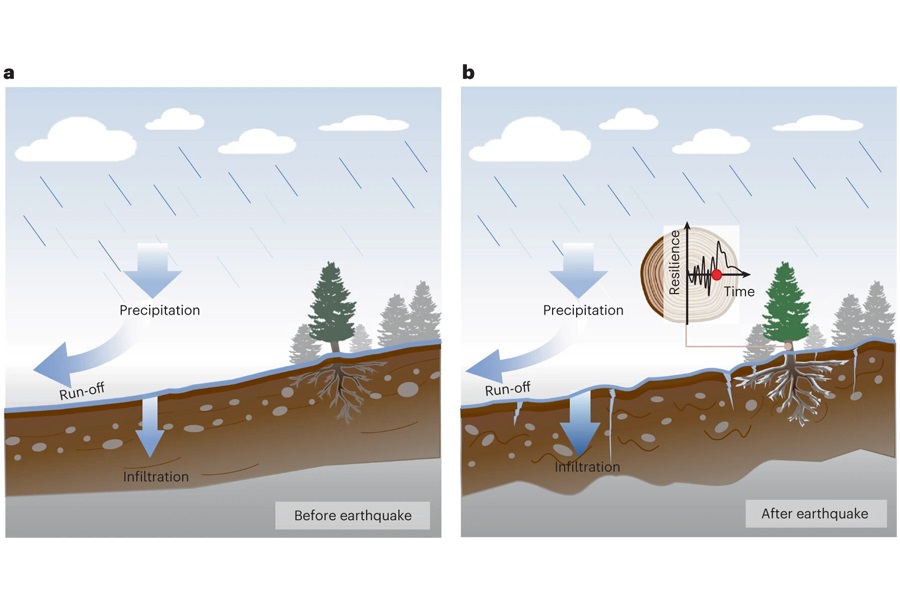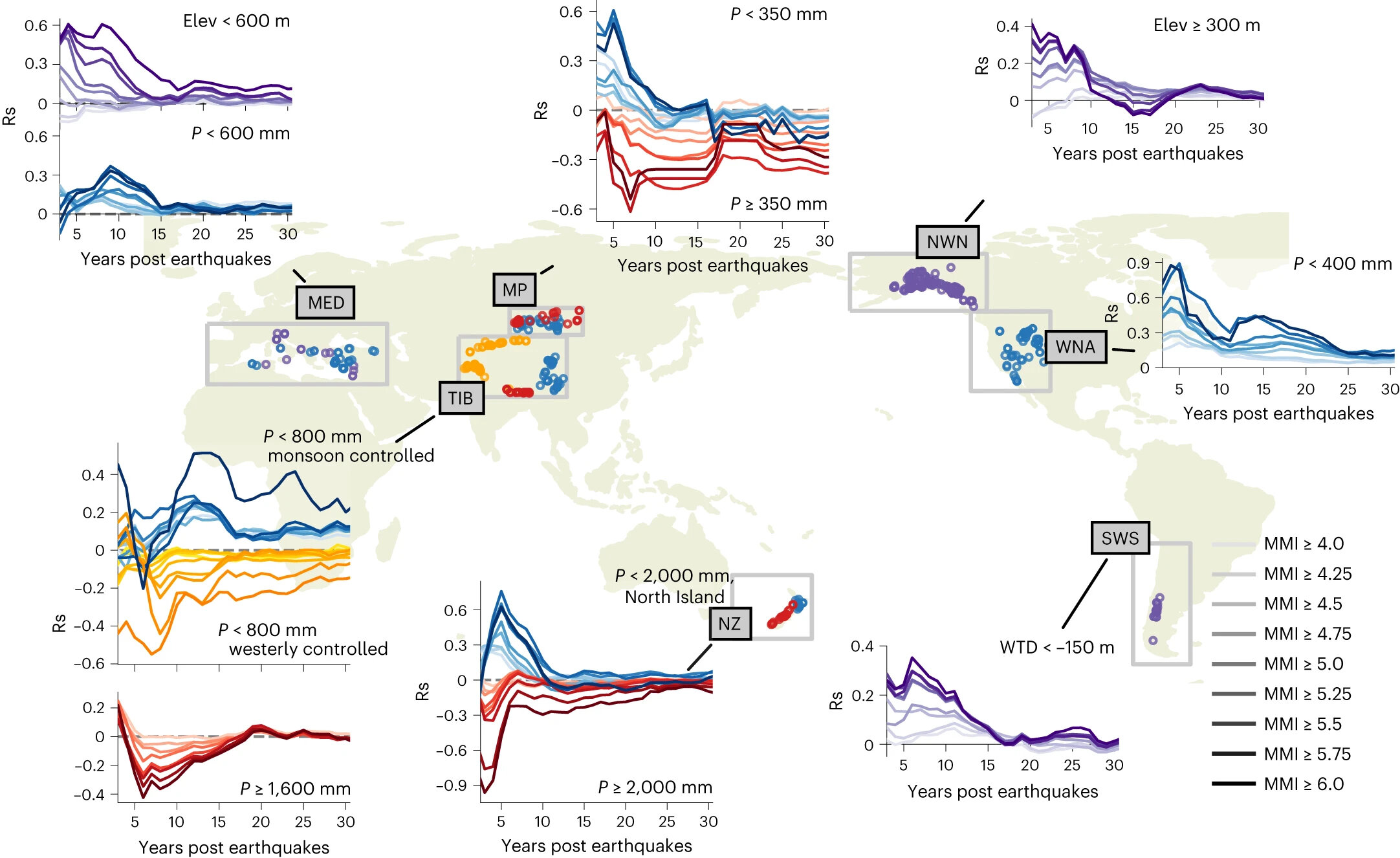11 Dec 2024

Tired Earth
By The Editorial Board

Earthquake effects are often thought of in terms of the human impact, be that fatalities or destruction to homes and infrastructure. However, the environmental toll can also be damaging, and new research, published in Nature Geoscience, suggests the forest recovery may take even longer than rebuilding an urban zone's infrastructure, on the scale of decades. For example, after the 1950 Zayu-Medog, Tibet, earthquake it took 45 years for the forests to fully recover.
Zones of tectonic activity are susceptible to earthquakes, which can damage forests by splitting and uprooting trees, as well as disturbing their water and nutrient supply. Dr. Shan Gao, of the Chinese Academy of Sciences, and colleagues turned to dendroclimatology to explore this further, studying the annual concentric growth rings of trees to reconstruct past environmental conditions.
Generating a forest dataset dating from the 1900s to present day across seven mountainous regions globally, accounting for 23% of Earth's forest cover, the researchers decoupled the link between the width of each growth ring and climate, so as to identify seismic-specific effects. Tree rings were dated and matched to known earthquake events over the last ~120 years, with the magnitude of each calculated using a Modified Mercalli Intensity (MMI) scale.
The team identified 31.4% of their 4,685 tree ring sites, across the Circum-Pacific and Alpine Himalayan seismic belts, experienced earthquakes with MMI ≥4, 16.2% MMI ≥5 and 7.3% MMI ≥6. They then tested the probability of an association between earthquakes and changes in tree growth rates over the 20 years directly following the event. In doing so, they identified key environmental conditions that either enhance or exacerbate the recovery resilience of forests post-earthquake event.

Dr. Gao and colleagues identified dry temperate zones (such as western North America, the Mongolian Plateau, the Tibetan Plateau, the Mediterranean region and New Zealand) as being the most resilient, experiencing a noticeable positive response to precipitation patterns in the size of tree growth rings after seismic activity.
For North America, the Tibetan Plateau and South America, recovery occurred within a few years and lasted for >20 years in western North America. However, for areas of the Tibetan Plateau and New Zealand, negative precipitation and growth responses to earthquakes occurred more frequently over the study interval and lasted for 10–15 years, making them less resilient than their contemporaries aforementioned. Meanwhile, in drier parts of the Mediterranean and Mongolian Plateau response patterns were less distinct.
This is linked to cracks and fractures in the soil, created by vigorous ground shaking, generating permeability pathways for deeper precipitation infiltration through the ground, thus enhancing the reservoir of water and nutrient supply to trees. It is even more noticeable for the Mongolian Plateau and Mediterranean regions which preserve seismic activity in trees at lower elevations, supporting the benefits of enhanced infiltration compared to steeper topography that has less water storage, such as that of New Zealand.
Conversely, a significant decline in resilience was found in regions, like New Zealand, with high precipitation rates due to the negative impact on soil erosion and leaching of nutrients from the immediate area, stunting tree ring growth.
Overall, Dr. Gao suggests climate-related shifts in forest resilience may only last up to five years, whereas those resulting from seismic activity can be sustained for 20 years or more.
Understanding forest resilience after earthquake events is important to assess the challenges unique biodiversity may face in their own recovery, as well as the need to manage risks in order to protect these vital carbon sinks in the wake of our current global climate crisis.
Source : phys.org
Comment